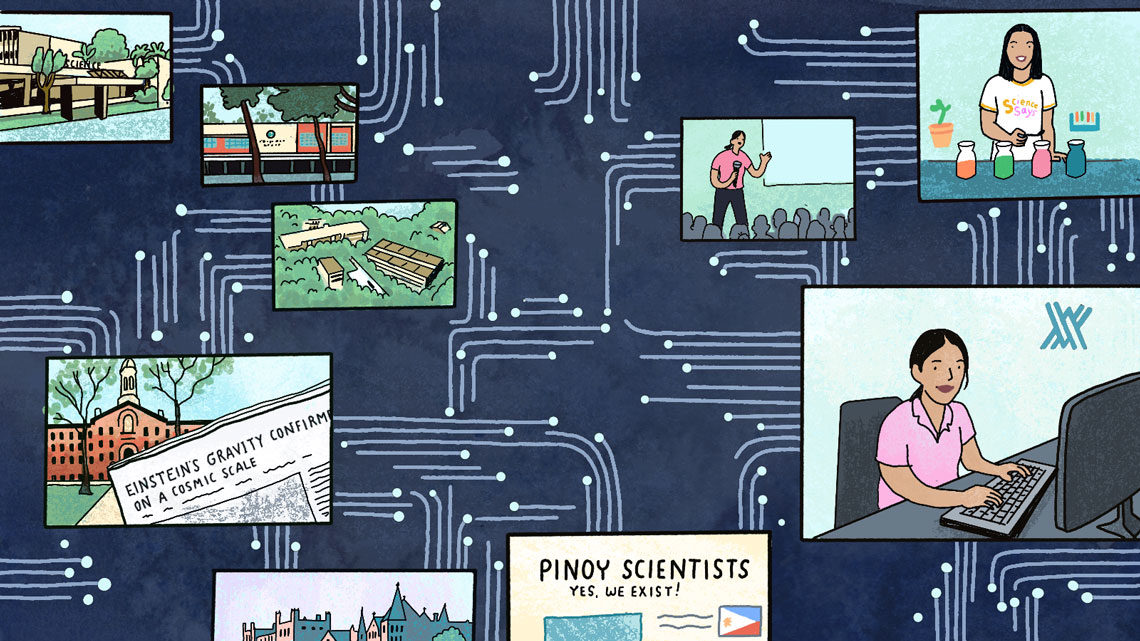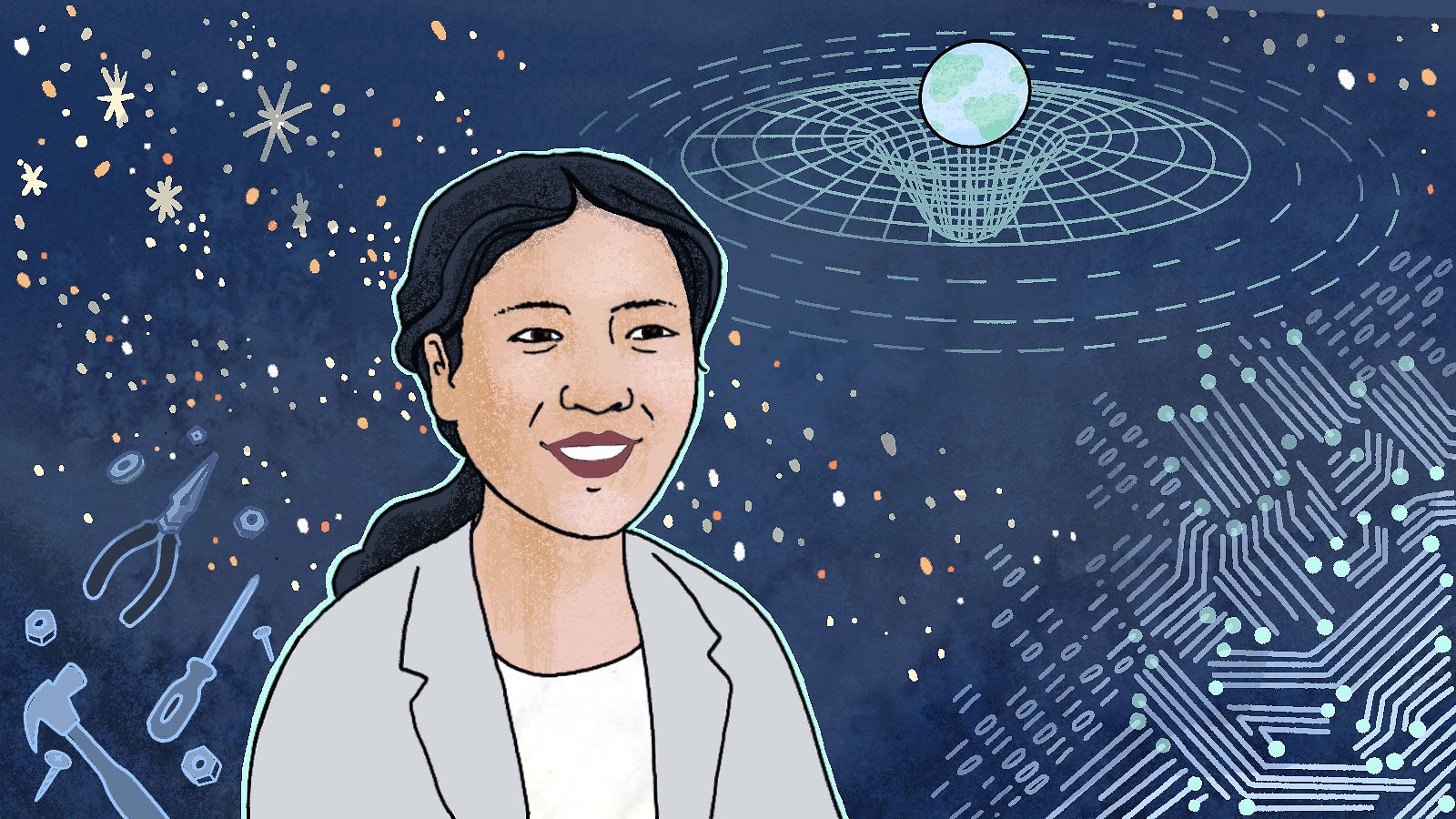Physicist Reina Reyes had a plan: After completing a postdoctoral position in astrophysics at the University of Chicago, she would apply for a more permanent academic position in the US.
That plan derailed, however, when she experienced, in her words, “a very early midlife crisis.” Rather than prompting her to buy a sporty new car, however, the identity crisis manifested in a move back to the Philippines, and a shift from academia into applied science.
“I wanted to do something that has a more immediate impact to society than astrophysics,” she says. “It is almost a luxury that we can spend time in our lives studying the universe... For me, data science was closer to building solutions that affect the lives of everyday people.”
Reyes is now the head of analytics at the Ayala Corporation, a business conglomerate in the Philippines with interests in industries such as water, power, infrastructure, healthcare and education (to name a few). Her job allows her to use many of the skills she developed as an astrophysicist: problem solving, statistics and modeling, programming techniques, and the ability to work with large datasets. And most importantly, she says, it allows her to touch people’s lives.

A physicist from the Philippines
Reyes’ parents run a hardware store in a city just outside of Manila. She says having to run the cash register when she was younger taught her mental math, and her parents’ encouragement of her scientific curiosity was what eventually drove her to astrophysics. As her interest in stars and galaxies increased, her parents took her on trips to the planetarium and bought her a telescope.
Her pursuit of science took her to Philippine Science High School, a public magnet school for students interested in science, which she describes as fundamental to her education. “It’s great being with peers that are like-minded,” she says. “They’re interested in the same things you are, so you're not the only one that loves math and space. And of course, you challenge each other, you learn from each other. And you're not as isolated as you would be if you were in a normal school.”
After high school, she graduated from Ateneo de Manila University summa cum laude with a degree in physics. She earned her master’s in high-energy physics at the Abdus Salam International Center for Theoretical Physics in Trieste, Italy, then applied to PhD programs in the United States. She was accepted to Princeton University’s Department of Astrophysics, which she describes as “very, very friendly,” saying that “it feels like a much smaller department than it is.”
There she made headlines with a groundbreaking observational test of Einstein’s theory of general relativity, which describes the relationships between gravity, space and time. She and her group analyzed data from 70,000 galaxies and found that they were clustered and grouped together across the universe exactly as Einstein’s theory had predicted. Their observations were also consistent with the existence of dark energy and dark matter.
“She was a superb observationalist and a very gifted theorist,” says Princeton professor Jim Gunn, one of Reyes’ advisors, who describes her as a “model student.”
The finding got significant media coverage in the West, but, most meaningful to Reyes, it also got attention at home. “The Filipina who proved Einstein right,” read a headline from a local news website.
“Science media coverage doesn’t usually make it back here,” she says. “That also contributed to my eventual decision to come back and be part of this community.”
Even before that, she found a way to connect back with the Philippines.
While she was a postdoc in Chicago, Reyes saw a blog called Looks Like Science, which featured pictures and interviews of non-white, non-male scientists. “I was inspired by that and I thought, why not do something like this but specifically for Filipino scientists and for a Filipino audience?” she says. “We are even less exposed to stories and role models.”
In 2012 she founded a similar blog, called Pinoy Scientists, with the tagline “Yes, we exist!” (“Pinoy” is a colloquial Tagalog word for “Filipino.”)
After a few months working as an assistant professor in Manila, she shifted her university appointment to “part-time lecturer” so she could do data science for a telecommunications company. For four years she pursued different data science jobs, in addition to lecturing, and eventually settled at Ayala.
Despite no longer having a university teaching position, Reyes still enjoys sharing her love of science with younger students: She’s the host of Science Says, a children’s science show on a Filipino TV channel.
On the show, she performs simple science experiments that demonstrate concepts like inertia or friction. “We have fun doing the experiment and just finding out what happens,” she says. “We actually don't rehearse it. So most of the time I'm actually really surprised that oh, it really worked!” She laughs. “Or not, maybe just do a second take.”
Gunn, still at Princeton, says he hears through the grapevine about “all the wonderful things” that Reyes is doing in the Philippines. “I’m not at all surprised that she’s gone back and done very well,” he says.
The blog Pinoy Scientists still exists, eight years after Reyes started it. It is now also an Instagram account that is “taken over” by a different Filipino scientist every week. The scientist posts pictures and videos of their #lablife with engaging captions, giving their audience a glimpse into the every day experience of a researcher. They also engage in “Ask Me Anything!” sessions where followers can ask such questions as, “How do you deal with stress?” and “Where can I learn how to code?”
Some scientists post snapshots of their day, with personal commentary. Others post pictures of their research and explain their science. Irene Crisologo, a postdoc at Northwestern University's Department of Earth and Planetary Sciences, says she preferred to do the latter when she took over the account, but that she had fun getting personal with her “Ask Me Anything!” answers. When a follower asked for advice dealing with imposter syndrome, she responded, “What helps (at least in my case) is being kinder to myself… Being a scientist means we are always learning!”
“It's not only for the public,” Reyes says, “but also for us to know that we are part of this community and not just isolated and alone, which we can feel if we don't connect with one another.”
Primarily, she says, she made Pinoy Scientists for her younger self.
“Really, it’s for the Filipinos who are in high school now, thinking about their careers and what they want to pursue when they grow up, having these role models,” she says. “These role models are living fulfilling lives and making a contribution to society. There are so many different ways to do science and so many different fields, so many different paths, and showing that is really what the platform is for.”













